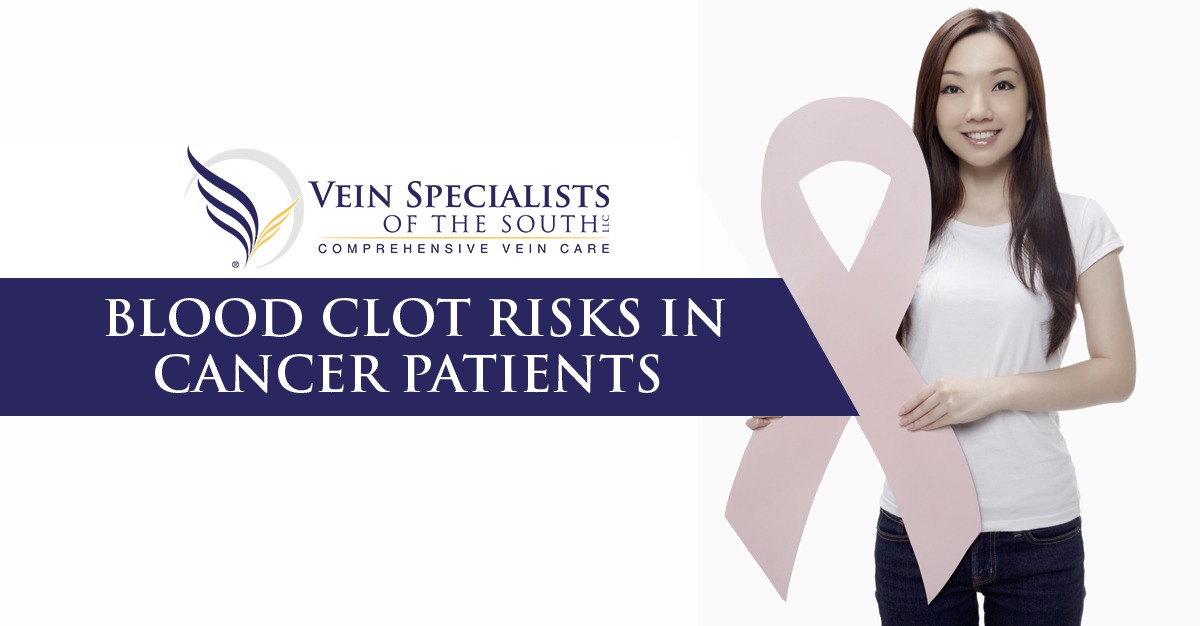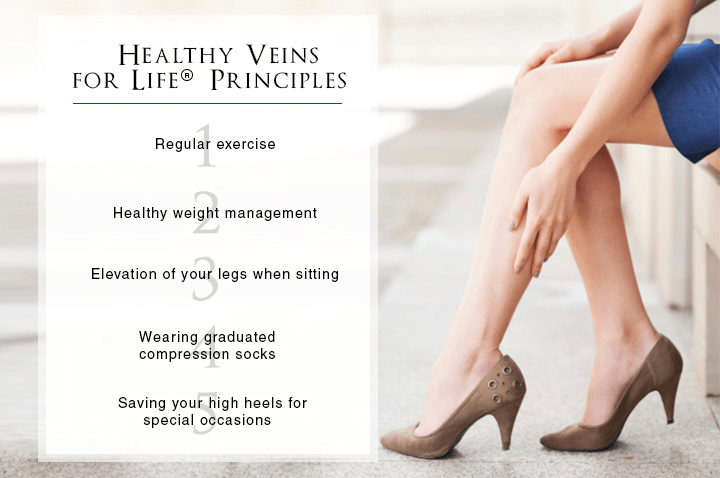If you have cancer and haven’t started your treatments, take care of yourself and your health. Discuss your risks and how to reduce them with your physician. Following our Better Veins for Life® principles can help: exercise, maintain a healthy weight, elevate your legs, and wear compression hose.
If cancer surgery is in your future, discuss how you can reduce your risk of post-surgical blood clots with your surgeon. Your surgeons and their staff will work with you after surgery to get up and walk after surgery. If you can’t walk they may order intermittent compression garments to wear and encourage you to pump your calf muscles to stimulate blood flow. Also, take advantage of adjustable hospital beds and elevate your legs as comfortable. They may, also, order blood thinners. Discuss all of your concerns and what you can do to alleviate the risk of blood clots safely during your in-hospital and at-home recovery after surgery.
Chemotherapy can be trickier, as many patients are very ill for several days following a chemotherapy treatment. It’s important to wear compression stockings during your treatment and during days when you’re feeling very ill and in bed. On the days when you’re feeling well enough, go for short walks as is comfortable, elevate your legs, or just remember to pump your calf muscles often. Continue wearing your compression stockings.
These tips aren’t just good for individuals struggling through cancer. Everyone can benefit from these tips for blood clot prevention. So help your loved ones and spread the word.
Can I Receive Blood Clot Treatments During Chemotherapy?
If you’re undergoing chemotherapy, you can and should be treated for blood clots. In most cases, your doctor will place you on a blood thinning medication. With DVT, the blood thinning treatment may begin in the hospital, but new medications can be started as an outpatient. Treatments may last from 6 weeks to the rest of your life depending on your risks.
What Are The Signs Of Blood Clots?
When DVT develops there are often no symptoms. If symptoms develop, you may notice pain in your leg muscle or calf, leg swelling, tenderness, and/or discoloration. Seek immediate medical care if you notice symptoms and ask, “How do you know I don’t have a DVT.”
Blood clots that form in the leg can break free traveling to the lungs causing a life-threatening condition known as Pulmonary Embolism (PE). It is crucial to diagnose your blood clots as soon after they form to begin treatment and decrease the risk of a life-threatening PE.
How Vein Specialists Of The South In Middle Georgia Helps Patients With Blood Clots
When it comes to cancer and DVT risk, the important thing is to minimize the risks of blood clots first. This is true of all patients who are on extended bed rest following an injury, long illness or surgery.
If you have unexplained leg pain or heaviness, or you suspect you have a blood clot, contact our team right away for an appointment or go to your nearest ER. You should be assessed with ultrasound to check your veins and look for any blood clots, discuss potential treatment plans and prevention methods.











